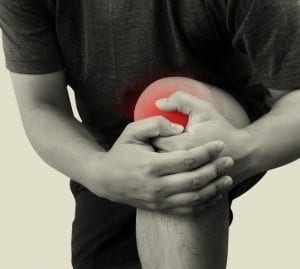A tear of a knee ligament is usually caused by intense physical activity. In most cases, treatment for torn ligaments of the knee joint involves surgery within Orthopedics in Israel. In Herzliya Medical Center, a private hospital in Israel, surgery on the knee is performed by arthroscopy – a minimally invasive technique using modern endoscopic equipment. This method causes less damage to healthy structures of the knee joint and promotes the rapid recovery of the patient.
Treatment of torn ligaments of the knee joint
A ligament tear in the knee is a common sports injury. This type of knee injury usually develops because of a sudden stop after a quick run, a sharp reversal from the fixed body position of the foot, when landing from a jump or overextension of the knee. In addition, the cause of torn ligaments is often due to car accidents.
The most vulnerable knee ligaments are the paired cruciate ligaments of the knee (anterior and posterior) that are interconnected with the femur and tibia. The main function of the anterior cruciate ligament is to stabilize the knee joint and prevent the tibia from sliding out the tibia. Moreover, ligaments are composed of collagen fibers, which are hard and durable. Anterior cruciate ligament (ACL) tears are one of the most common knee injuries.
Symptoms of an anterior cruciate ligament tear
Symptoms of an anterior cruciate ligament (ACL) injury develop immediately after a traumatic episode. These include:
- Sharp pain in the knee
- Swelling in the knee joint
- Inability to rely on the affected lower limb
- Sometimes a ligament tear is accompanied by a snapping or clicking sound
Torn ligament first-aid
If you suspect a knee ligament tear it must be rested immediately after exercise, immobilize the limb, and apply ice or a cool compress to the damaged area and take nonsteroidal anti-inflammatory drugs (NSAIDs), such as acetaminophen. It is advisable to follow these directions and see a podiatrist or doctor as soon as possible.
Diagnosis for a torn knee ligament
Doctors can assume the presence of an ACL tear, by performing the following diagnostics:
- Radiography: on radiographs, a ligament rupture cannot be determined, but it is necessary to exclude related fractures
- Magnetic resonance imaging (MRI): these allow for a visualization of the internal structures of the knee joint (ligaments, cartilage, bone) and help assess the degree of damage.
- Ultrasound (US) – an informative and affordable diagnostic test, which in some cases can replace the MRI procedure
Treatment of an anterior cruciate ligament tear
A torn anterior cruciate ligament in the knee does not have the ability to regenerate and its integrity cannot be restored. In order to stabilize the knee joint, the damaged ligament graft must be replaced. The replacement can be made of synthetic material or maybe a donor tissue obtained from the patient. After transplantation, the patient will need long-term rehabilitation aimed at restoring mobility in the joints, strengthening the muscles and preventing a future injury.
Young adults, including professional athletes who want to maintain their past level of physical activity, are suitable for the surgical procedure. Elderly patients who present musculoskeletal diseases, and whose mobility was limited even before the injury, in many cases, prefer conservative treatment and rehabilitation. For minor injuries, rehabilitation measures allow older patients to achieve a stabilization of the knee joint and then maintain a moderate level of physical activity.
Conservative treatment includes:
- Using crutches and orthotic devices for taking the pressure off the injured limb when walking
- Exercises to restore joint mobility
- Exercises to strengthen muscles
- Surgical treatment for the anterior cruciate ligament tear
Surgical treatment
Surgical treatment for an anterior cruciate ligament tear is carried out in the framework of arthroscopy – a minimally invasive surgery. In the cavity of the knee joint through a small incision, the optical instrument (arthroscope) is used, on which there is a miniature digital camcorder. Thus allowing the doctor to examine the internal structure of the joint, and then use special tools to perform the surgery. Arthroscopy, in contrast to open surgery, is not accompanied by trauma to the healthy tissue, so the process of rehabilitation after is considerably faster.
Most doctors performing knee surgery prefer to repair a torn ligament using the patient’s own tissue (autograft). In this case, using the patellar either ligament or tendon fibers semitendinosus (hamstring-transplant). An autograft or a synthetic analog is attached to the bones of the lower limb by means of screws or staples.
Following surgery, it is advised that the patient implement the following:
- Avoid stress on the injured limb, use crutches or a walking walkers
- Cool the post-operative joint for 20 minutes every day (apply ice)
- Use an elastic bandage on the knee
- If possible, keep the operated lower limb in an elevated position
Podiatrists at Herzliya Medical Center’s private hospital have extensive experience in carrying out complex knee joint surgeries and more, HMC has a renowned Orthopedics Department for effective diagnostics and treatment of numerous musculoskeletal disorders. The use of innovative surgical techniques and the use of modern equipment can effectively reconstruct the damaged structures and restore the lost function of the knee.
 Patients Log In
Patients Log In 










